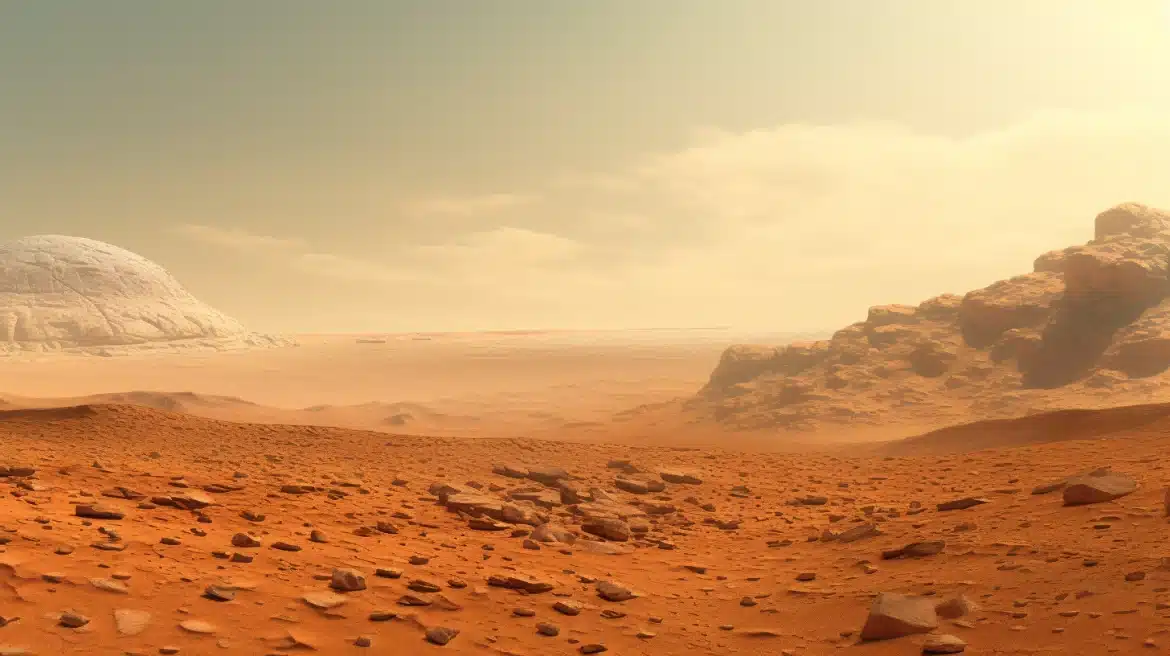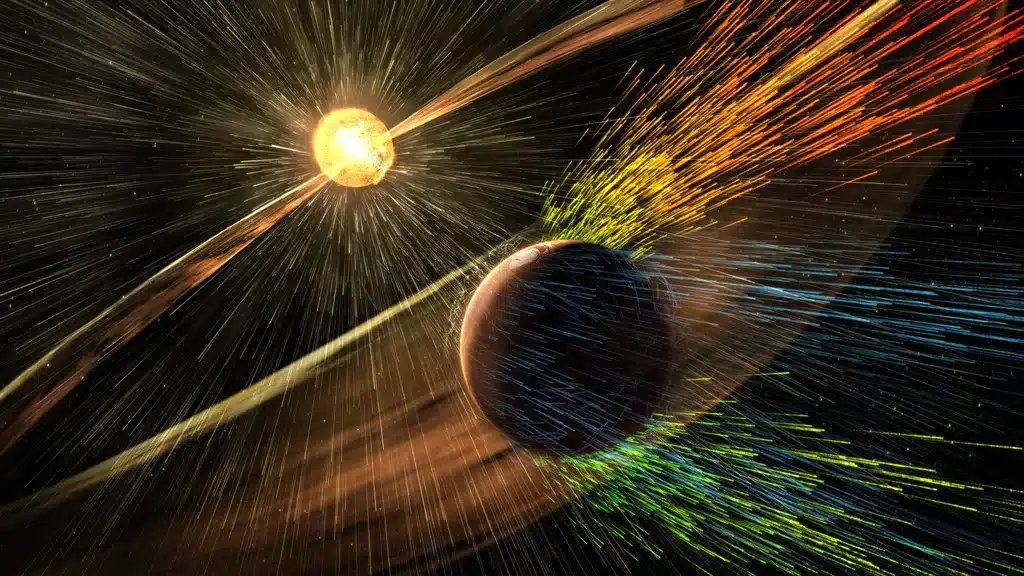Do you think Mars is a dead planet? What are the factors or reasons for many scientists to conclude that Mars is no longer alive?
Let’s explore Mars together and find the answers to all your questions in this informative article. Just starts with knowing a little bit more about Mars.
Mars, often called the Red Planet, has been the subject of curiosity and exploration for decades by many scientists, especially regarding its potential to sustain life.
Whether Mars is a “dead” planet is a complex and multi-layered planet project, touching upon various aspects of planetary science, astrobiology, and space exploration.
Factors that Conclude Mars as a Dead Planet
1. Geological Activity and Surface Conditions
In its present state, Mars appears to be geologically inactive thanks to its magnetic field. Unlike Earth, it has no significant magnetic field.
The active magnetic field is often a sign of a molten, active core in the Earth.
Earth’s magnetic field results from its dynamic and molten core, which also leads to the shifting of plate tectonics, leading to earthquakes, volcanic activity, and mountain-building.
On the other hand, Mars currently shows no evidence of volcanic activity.
However, there were few signs of volcanism on a significant scale in ancient times.
As observed by numerous missions, the surface of Mars is dry and covered with regolith, a layer of dust, and is extremely rocky.
The planet’s thin atmosphere, composed mostly of carbon dioxide, offers little protection from cosmic and solar radiation.
This radiation makes the surface unsustainable for life as we know it and even contributes further to the erosion of the Martian atmosphere.
2. Water on Mars
Water, a key ingredient for life as we understand it, does exist on Mars, but not in the same abundance or state as on Earth.
The Mars Reconnaissance Orbiter and other missions have provided evidence of water ice near the surface in the polar regions and beneath the planet’s regolith structure.
Moreover, the surface features suggest that water once flowed across Mars, creating rivers, lakes, and possibly even oceans.
However, the current conditions on Mars’ surface—low atmospheric pressure and temperature—make it impossible for liquid water to exist significantly.
It either freezes or sublimates (turns directly into vapor) quickly, throwing the question of sustenance of human life out of the question.
3. The Atmosphere and Climate
Mars has a very thin atmosphere, composed mostly of carbon dioxide, with traces of nitrogen and argon.
This atmosphere is too thin to support Earth-like life and offers little protection against harmful radiation from the sun and cosmic sources.
The Martian climate is also extremely cold, with average temperatures around -80 degrees Fahrenheit (-62 degrees Celsius), far below what most known life forms can tolerate.
4. Potential for Extinct or Microbial Life
The absence of active geological and biological processes on the surface does not completely rule out the possibility of life. Mars may have been more hospitable billions of years ago, and some theories suggest that life could have developed during that time.
If so, evidence of past life might be found in fossilized form or as chemical signatures in Martian rocks.
Furthermore, the possibility of microbial life in subsurface environments, where water might be present in liquid form, has not been ruled out.
The discovery of various organisms that can survive in extreme environments on Earth has expanded our understanding of where life can exist, raising the possibility that similar organisms might survive beneath Mars’ surface.
5. Human Exploration and Future Prospects
The ongoing exploration of Mars, primarily through robotic missions, provides valuable data about the planet’s conditions.
The Mars rovers, such as Curiosity and Perseverance, are analyzing soil and rock samples to search for signs of past life and understand the planet’s geological history.
Future missions, possibly including human exploration, might reveal more about Mars’ potential to support life and its geological history.
These missions could also explore the feasibility of terraforming or making Mars more Earth-like, which remains a scientific and ethical debate topic.
Conclusion
All in all, Mars, as we currently understand it, is mostly a “dead” planet because of no geological activity and its inability to support life as we know it.
However, the Red Planet still holds many mysteries, particularly its past, which are yet to be discovered and, once known, can change how we think about Mars as a planet.
For instance, the possibility of finding evidence of past life, or even existing microbial life in subsurface environments, keeps the journey to understand Mars an exciting and ongoing project in planetary science and astrobiology.
The future exploration of Mars, particularly by humans, may reveal more about this fascinating planet’s potential and its place in the broader context of the search for life in the universe.
Frequently Asked Questions
Why is Mars Bad for Life?
In addition to Mars having no atmosphere, thanks to the absence of a magnetic field, Mars also doesn’t have a temperature conducive to life.
The average temperature of Mars is minus 62 degrees, which humans today cannot survive.
Moreover, due to the lack of an atmosphere, harmful ultraviolet radiation doesn’t get blocked by the sun, which can frequently cause human cancer.
Is It Safe to Touch Mars?
Touching Mars means touching Mars’s soil; generally, it is considered poisonous and toxic.
This is because of the extremely high levels of perchlorate compounds containing chlorine.
Rovers like Sojourner, Spirit, Curiosity, and Opportunity first discovered the chlorine in the soil.
What are the Safest Parts of Mars?
Based on the numerous research and findings, the best and safest parts of Mars are the Northern Lowlands, which lie in the low-lying areas, i.e., beneath the surface of 1 and 1.6 meters.
This part of Mars has a relatively thicker atmosphere, making it more conducive to life. Moreover, you will likely find ice beneath the surface in these Mars areas.


